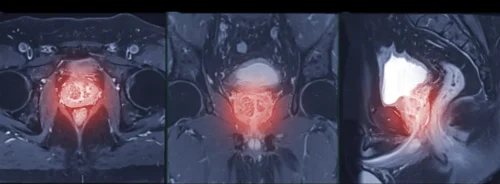HealthManagement, Volume 25 - Issue 3, 2025
The global rise in life expectancy is placing growing pressure on healthcare systems. With age often comes a higher prevalence of chronic diseases, multi-morbidity and complex care needs that stretch traditional service models beyond their limits. Ensuring that elderly individuals receive safe, coordinated and person-centred care is not just a clinical necessity but a societal imperative. With the ongoing change in the populational pyramid, the ageing population is not a future concern, but a present reality that requires urgent and sustained action from all levels of healthcare and policy.
Responding to these challenges requires a comprehensive shift towards integrated care pathways, digitally enabled innovation and greater patient empowerment. From prevention to long-term management, the intersection of ageing and chronic illness calls for bold leadership, strategic investment and inclusive policies that close equity gaps and prioritise outcomes over processes. As demographic shifts accelerate, aligning clinical practice with evolving patient needs becomes essential to preserve health, dignity and independence in later life.
This issue examines a wide spectrum of strategies that address the realities of ageing and chronic disease, from frontline innovations to systemic reforms. It features expert insights into safety, digitalisation, predictive tools, workforce and patient engagement.
Dr. Agnès Leotsakos examines how ageing patients are increasingly exposed to preventable safety risks due to fragmented care, medication-related harm and inadequate system responses, calling for urgent, patient-centred healthcare reforms.
Dr. Mera Cordero et al. describe how multidisciplinary, patient-centred strategies combining clinical care, functional rehabilitation and scientific innovation can enhance recovery and resilience in Long COVID management.
Begoña San José explores how ageing women’s chronic care is shaped by lifelong habits, cultural norms, digital exclusion and under-recognised emotional burdens.
Artem Arutyunyan draws attention to chronic migraine as a widespread, disabling condition still largely neglected by health systems and often left untreated.
Wandile Ntuli presents the role of biokinetics in chronic disease management as a patient-centred approach that restores function, reduces readmissions and supports holistic care.
Ejike Nwokoro et al. demonstrate that predictive tools integrated into Clinical Homecare can significantly improve medication adherence, reduce medicines wastage and generate substantial cost savings for the NHS.
Abdulrahman Alyami outlines how Saudi Arabia is leveraging digital health, AI and patient self-management to reform elderly care amid growing chronic disease and ageing population pressures.
Richard Dasselaar argues that digital self-care should evolve from fragmented apps into integrated, equitable systems embedded in value-based healthcare frameworks.
Yuri Vasilev et al. detail how Moscow researchers have developed advanced medical phantoms and a dedicated materials database to enhance imaging training, diagnostic accuracy, and international collaboration in AI-driven healthcare innovation.
Jens Kögler explains that achieving connected, data-driven care depends on interoperability, smart regulation, investment and active patient participation.
Dr. Frederic Llordachs proposes a Zero Click Health model that leverages AI, automation and intuitive interfaces to reduce digital friction, ease clinician burnout and enhance care quality by reclaiming valuable medical time.
George Glass et al. showcase the CHI-FLYING Hackathon model, enabling healthcare professionals to collaboratively develop validated and sustainable innovations.
Rita Veloso and Renato Magalhaes discuss how XR is revolutionising medical education by boosting skill development and teamwork, despite barriers like cost and limited access.
Jeff Richards analyses how AI-driven staffing tools can address the nurse shortage, provided leaders and policymakers ensure systems truly support caregivers.
We hope these contributions will stimulate a fruitful dialogue, reflection and action in your organisations and communities and inspire meaningful steps towards more resilient and inclusive models of care.
Happy reading!






